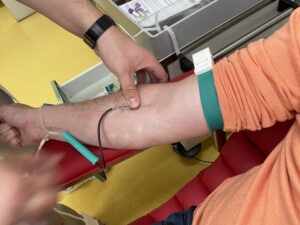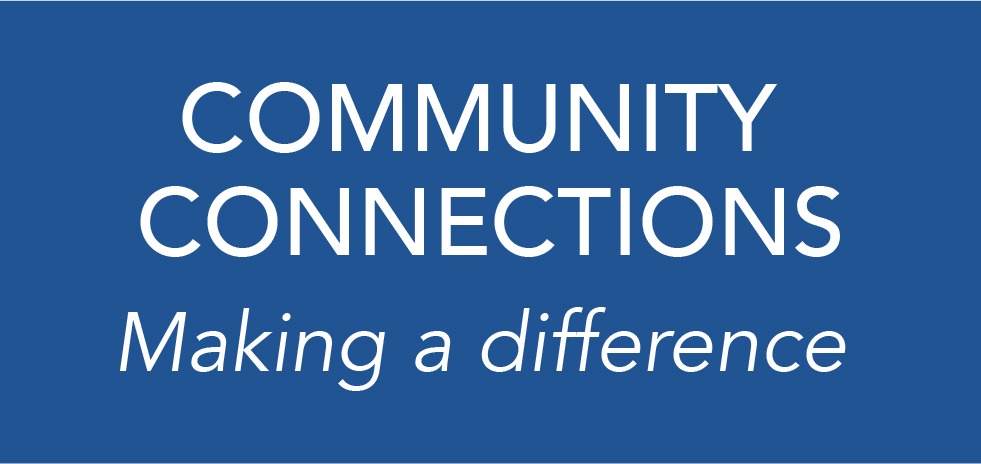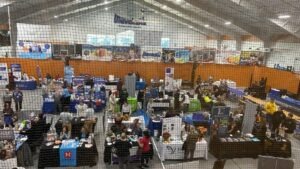
Pennsylvanians are being affected by the ongoing national shortage of ADHD medications, which the Food and Drug Administration announced in October 2022. It stemmed from manufacturers being unable to source enough amphetamine mixed salts, which are the active ingredient in Adderall. Due to this scarcity, patients changed to other medications, but the higher demand for those drugs worsened the issue.
People with ADHD struggle with focus and tend to be more impulsive and one study estimates that 8.7 million U.S. adults have the disorder. While the causes are not well understood, stimulants that increase dopamine and norepinephrine can help.
One local professional who was diagnosed with ADD states that the medication helps him be a better mentor to young researchers, provide better care to his patients, and stay emotionally regulated while parenting his high-needs kids.
One patient states that he sees a remarkable difference in his parenting styles, exhibiting more patience and self control and when he runs out of his generic Vyvanse, caregiving is much harder.
The shortages have forced people with ADHD, and their caregivers, to spend hours calling different pharmacies — sometimes in other cities or states — to get prescriptions filled. Others have gone without their medication or rationed their pills — and in attempts to keep symptoms at bay, it is not uncommon to try different prescriptions which are more readily available.
Gary Swanson, a child and adolescent psychiatrist at Allegheny Health Network said that when someones medication wears off, their attention span and impulse control return to previous levels.
“I often use the analogy of wearing glasses,” Swanson said in a statement. “Without your glasses, your vision is back to baseline. If someone misses their stimulant medication, they may have a much more difficult time focusing and paying attention, and they may be more impulsive, restless or hyperactive.”
Increased demand for ADHD drugs plays a big part in the shortage, and is a recent development according to some pharmacies. The stress and isolation experienced by many people during the early months of the COVID-19 pandemic exacerbated their ADHD symptoms; this perhaps led more to seek treatment.
Also, prior to COVID-19 the federal government did not allow ADHD medications to be prescribed via telehealth because of a potential for misuse. That changed in January 2020, when federal regulations lifted a requirement that these Schedule II controlled substances only be prescribed following an in-person examination.
Data from the CDC show that while prescriptions for ADHD medications were already on the rise, the jump between 2020 and 2021 was the largest single-year increase, with the annual change exceeding 10% in many age groups. This includes women and girls between ages 15 and 44. (Though the disorder was once thought to only affect men and boys, research suggests that ADHD is under-diagnosed in women and girls.)
Another recent study found that more kids are getting ADHD treatment too. In 2022, some 7.1 million kids in the U.S. had received an ADHD diagnosis, approximately one million more than in 2016.
Figuring out how to support kids during this shortage has been hard for parents, shared Christine Waanders, a clinical psychologist at the Childrens Hospital of Philadelphia. When a prescription ran out for one family, she said, they started giving their 14-year-old son coffee before school.
“With ADHD theres a lot of self-blame,” “And parents also have a hard time remembering, maybe, that some of these symptoms are so hard for kids to control.”
Kids who dont receive treatment often suffer both socially and academically, she added.
Navigating the ADHD drug shortage has been particularly hard for caregivers who rely on public transportation or lack flexibility during their workdays, as tracking down these medications can become a frustrating scavenger hunt that eats up their time and sends them to out-of-the-way pharmacies.
The recommended treatment for pediatric ADHD is a combination of family and teacher interventions, along with medications. But because families with fewer resources have a harder time finding available doses, Waanders said that her patients who come from less privileged backgrounds have borne a disproportionate burden during the drug shortage.
Data from the American Society of Health-System Pharmacists show drug shortages are generally on the rise. Its most recent data, from March, reported 323 active shortages, the highest number since the group began tracking them in 2001. Chemotherapy drugs were also among those in short supply.
Understanding when or why drug scarcities occur can be difficult, said Katie Suda, a pharmacist and the associate director of Pitts Center for Pharmaceutical Policy and Prescribing, where she studies shortages.
They happen for several reasons, many of them tied to how drugs are manufactured. Production starts with the non-medical substances that are used to produce the active ingredients of the medications. These then go to the manufacturers that make the actual drugs. The drugs are next purchased by distributors and finally sold to the medical systems or pharmacies, where patients or caretakers pick up their prescriptions.
Problems at one point in this complex, opaque system ripple throughout, said Suda. “I mean, even I don’t always know why the shortage occurs, right? And I’m studying this phenomenon in real time.”
One policy solution would be to increase transparency along the supply chain. Suda said this would give clinicians more time to plan for shortages and incentivize pharmacies and other distributors to purchase medications from more reliable manufacturers.
Other solutions include government-funded stockpiles of these pharmaceuticals, and also producing them domestically. But these proposals have limitations, according to Marta Wosińska, an economist at the nonprofit Brookings Institution. The raw ingredients used by domestic manufacturers still come from overseas suppliers, she noted, and stockpiling enough
reserve to last through a drug shortage is prohibitively expensive and might lead to panic buying that worsens availability.
In the meantime, patients continue to fend for themselves. Anecdotally, some state that availability has recently improved. But Suda noted five manufacturers of long-acting generic Adderall have recently decided to stop production, a development that could further exacerbate the current shortage. And an FDA database notes some makers of ADHD medications face “unprecedented demand” and shortages of active ingredients.
That’s unwelcome news for many who say that figuring out how to stay medicated has been grueling, noting that life and caregiving are harder without the medication, so they either attempt to keep up their or continue making multiple phone calls to other pharmacies in other states.





































